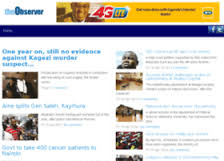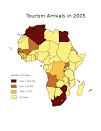
Who is Coco Finger?
Real names are Okori Moses, was born 1n 1982 to the late Otuke Augustine and Mrs. Maimuna Asunge in Grade B Hospital in Entebbe. Coco Finger is a talented PAM award winning Ugandan Dancehall, Ragga and Afro beat artiste. Coco Finger started music way back in the early 2000’s; he previously worked as DJ in different countries around East Africa such as Rwanda and Tanzania. Coco Finger broke through in the Ugandan music industry with his club hit Emikono Wagulu. Since then, Coco Finger has released many other amazing songs such as Party animal, Break My Heart. songs
Education
Coco Finger went to Kigungu Primary School, joined Aduku Secondary School in Apac for O-level Education and Premier High School in Ntinda for my A-level Education. In 2002 he enrolled for a diploma in social work from Nsamizi institute of social development, which he completed in 2003 after which he left for Dar es Salaam Tanzania in 2004 to concentrate his my music career. While there he worked as an Emcee, Karaoke singer and mimer. After three years he returned to Uganda and started recording with Fenon Studios.
Music Origin
Coco Finger began his career in Senior Two while at Aduku Secondary School in Apac, by writing songs. In 2004, he started doing music but it was not until 2009 that he landed a hit.
Stage Culture
He is currently ranked among the most popular dancehall artistes in Uganda, EA. He is a vocalist capable of both rapid-fire chatting and powerful melodic singing as portrayed in all his records. Coco Finger energetic Electric dance (Vibrator) is what distinguishes him from several Ugandan artistes.
Hard times
- Losing the dad
Coco’s dad Augustine Okori passed on in March 2015 in Aculbanya village Ogwangacuma, Aboke Sub-county in Kole District. His fellow musicians and some friends failed to show up for the funeral. Ms Stella Oleke, artiste’s relative told Daily Monitor “It was indeed a big shame to the music industry as fans and friends abandoned Coco Finger at the time he needed them most, not even upcoming artistes from northern Uganda turned up.” But even then Coco thanked his fans for the spiritual and financial support they offered his family.
- Getting Arrested

On November 10th, 2014, while coming back from the studio heading home with a friend, Coco is said to have lost control of his car and veered off the road. The police patrol vehicle found the trio crying out for help as their vehicle had got stuck in a trench. After police rescue, Coco Finger and friends were found with bottles of beer in their car and some illegal drugs. They were whisked off to Kisasi police post and detained. Coco was later transferred to Kyanja police post where he was released on a police bond.
Family

Coco Finger has a small family, a child and he stays with his girlfriend and several dependants.
Achievements
Like any young man Coco Finger enjoyed life and this gave him an opportunity to start saving part of my earnings to realize the dream of setting up a home.

“It is hard to keep away from certain fun activities in the name of saving money for building a house,” Coco Finger once remarked while speaking to Daily Monitor about his Kawuku based house which was nearing completion by 2015. His dream was to have a house of his own.
Coco Finger’s hobbies
Basketball, swimming, table tennis and sport fishing. He also loves charity work and thus he donated ten bags of cement to Buganda Kingdom’s Ettoffalli fundraising drive.
Hates Bickering

Coco’s best dish?
Fresh Fish and sweet potatoes.
Famaous hits
Visit http://www.eachamps.com/Coco-Finger.html











